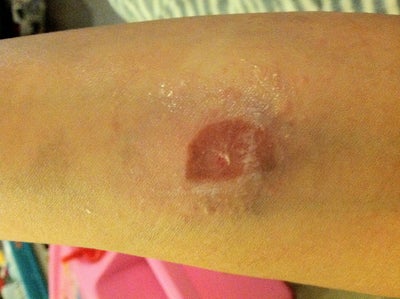

Licorice extract in 10% concentration was shown not to be effective in healing of P. The mean histological score, tensile strength, maximum stress, yield strength and stiffness in groups B-D were lower compared with Group A. aeruginosa was still visible in groups B-D but was absent in Group A. After 3, 7, 14, 21 and 28 days of therapy, the animals were sacrificed and burn areas were macroscopically examined and histologically evaluated.ĭecrease in size of the burn wounds, in inflammation and re-epithelialization were poor in groups B-D. aeruginosa (PA 103) were inoculated subcutaneously into the burnt area. After 24 h of burn production, 10(8) colony forming units (CFU) of toxigenic strains of P. This study was undertaken to evaluate the healing effect of licorice in Pseudomonas aeruginosa infected burn wounds of experimental rat model. A standard 3rd degree burn wound was produced by a hot plate with similar size about 20% of total body surface area (TBSA) and at identical temperature. Background: Burn is still one of the most devastating injuries in emergency medicine while improvements in wound healing knowledge and technology have resulted into development of new dressings. Group D did not receive any medication and just underwent burn injury. Group A received silver sulfadiazine ointment, Group B received 10% licorice extract and Group C was considered as control group and received gel base as the base of medication. Biofilm infection is regarded as a major contributing factor to the failure of burn treatment and a persistent inflammatory state delays healing and leads to the formation of chronic wounds. The keys to good Infection Management in burns are:- Intensive and frequent bacteriological surveillance of the patient. One hundred and twenty female Sprague-Dawley rats were randomly allocated to 4 equal groups. 7,13 A common scenario of TSS involves a young child with a small burn who experiences rapid deterioration the condition can become life threatening within. 13 Clinical TSS presents with a variety of symptoms, including rash, irritability or lethargy, pyrexia, and shock. This study was undertaken to evaluate the healing effect of licorice in Pseudomonas aeruginosa infected burn wounds of experimental rat model. Toxic shock syndrome (TSS) from toxic shock toxin-1producing S aureus is a rare but serious complication of burn infection that primarily affects young children because of their lower levels of protective antibodies. Burn is still one of the most devastating injuries in emergency medicine while improvements in wound healing knowledge and technology have resulted into development of new dressings.


 0 kommentar(er)
0 kommentar(er)
